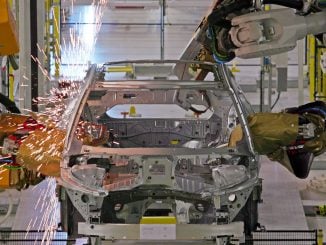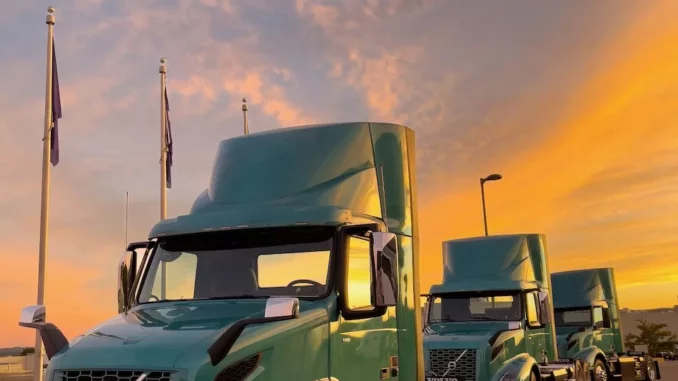
DUBLIN, Va. — At first glance, driving the electric Volvo VNR regional big rig truck is the same as driving the internal-combustion version: release the yellow parking brake (whipshhhhhhhhhh), shift to Drive, and set off.
I tested the new electric VNR at the Volvo Trucks factory in Virginia, where it’s made on the same line as its diesel-powered brethren. Outside or in, it’s nearly impossible for any non-trucker to tell the two apart. And, at least partially, that’s the idea. The trucks share numerous components from the frame to the body, the tires, and even significant chunks of the drivetrain downstream from the transmission are the same.
That’s because for these sleeperless-trucks — those without a bed for long-haul drivers to grab some shut-eye in — typically used to deliver groceries or other goods from a warehouse to final distribution, among many other uses, it’s commonplace for drivers to move from one rig to another from one day to the next. That means the electric and diesel versions must operate as similarly as possible.
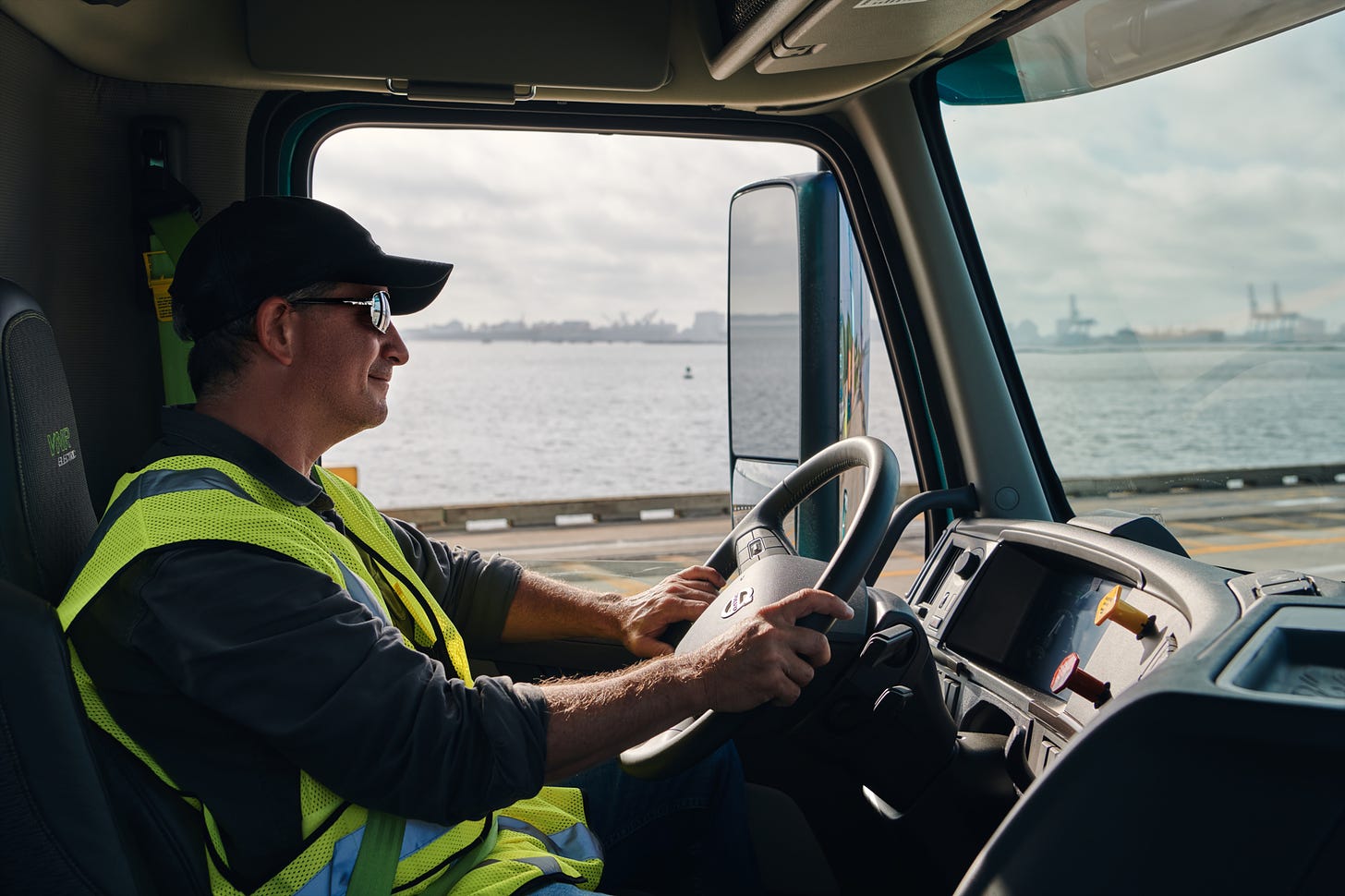
Aside from the dash cluster, which shows the current battery charge in place of diesel fuel in the tank, and an energy meter instead of an engine tachometer, just about everything else is identical. The biggest difference is a lever typically used to control engine braking that instead adjusts the aggressiveness of the regenerative braking used to recharge the battery when the truck slows down. As you can imagine, slowing a 60,000-pound tractor and trailer can generate a fair amount of electricity.
I’d driven an electric big rig before, a Freightliner eCascadia around the parking lot of a Los Angeles MLS stadium, so I knew what to expect. Lots of smooth, low-end torque and an unsurprisingly quietish ride. The company pointed out that the best part of an electric truck is that acceleration is significantly smoother as there’s no herky-jerk of constant gear changes. Even with a smooth automatic transmission like the VNR uses, the driver and cargo get tossed about during acceleration.
The VNR Electric, on the other hand, has a two-speed transmission, but the shift is seamless and only happens once in the mid-20 mph range. The two gears ensure plentiful low-end torque when pulling away from a stop and enough oomph from the electric motor to maintain highway speeds with ease.
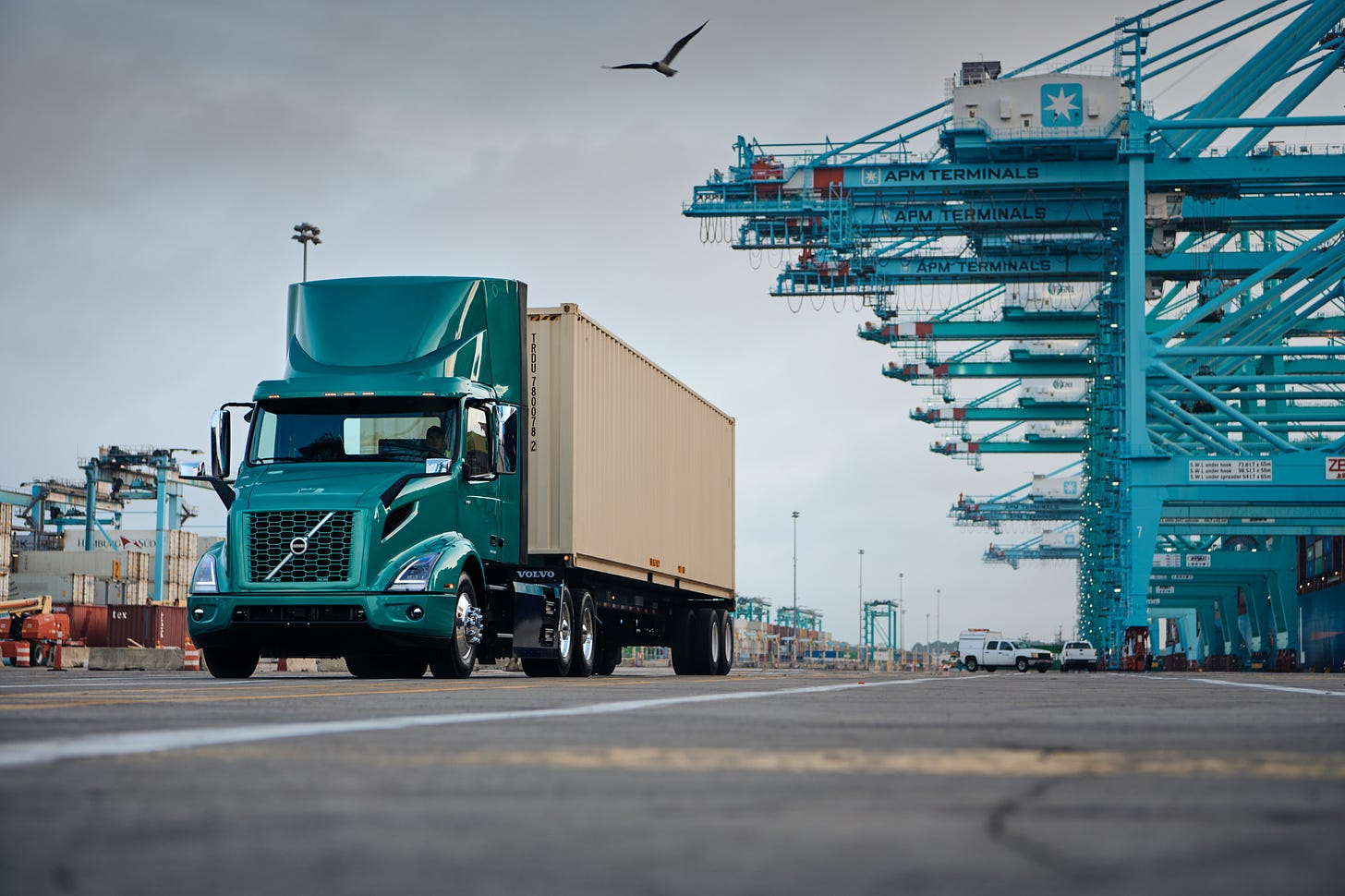
When most people think of big rigs, they imagine the long-distance drivers on the interstate, sleeping at truck stops and traveling across the country in a matter of days. But for the thousands of regional trucks on the road, an all-electric rig makes a lot of sense. They often have predictable routes, perhaps heading from a warehouse to a series of stores and back again, over and over, every day.
The trucks are offered in 4×2, 6×2, and 6×4 configurations (with one or two rear axles, depending on the weight that needs to be pulled) and different battery configurations depending on the range required. A four-battery unit might have a range of 175 miles, while a 6-battery rig could go up to 275 miles. These numbers will vary depending on the load, terrain, and traffic, but they are reasonable representations.
Volvo is working with its customers to help examine routes and the utilization of individual trucks to determine where electric rigs might fit best. Since customers are typically running fleets of trucks replaced in small numbers as they age, it’s reasonably easy for companies to adopt electric trucks in small numbers and grow them over time.
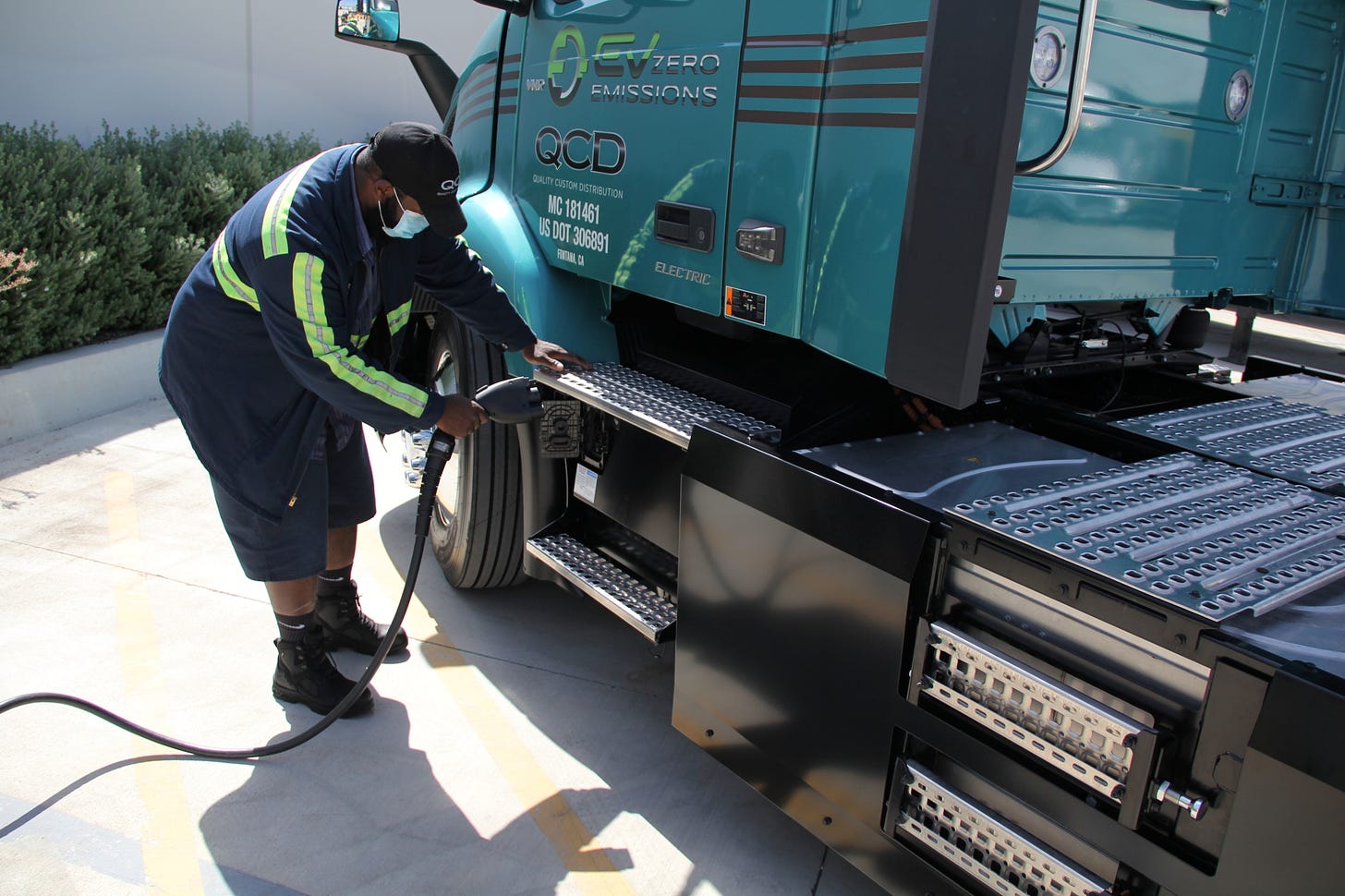
Since logistics and analytics are already second nature for the trucking industry, there’s plentiful data to determine which trucks could benefit from being replaced with an electric version and how much companies can expect to save on maintenance, fuel, and uptime. Diesel saw tremendous price increases in 2022 for various reasons, adding urgency to considering electric big rigs.
Volvo is working with a number of electric-certified dealers to help companies determine how and where to install chargers, best practices, and more. For trucking companies, the simple questions may be how much can I save, and when can I start?
A Volvo executive told me that major trucking companies like Schneider are already highly familiar with their electric options and are working on projects and pilots at a high level. But small and mid-sized firms don’t have the time and energy to manage their transition to electric, which is where Volvo and its dealers come in, providing education and answering questions.
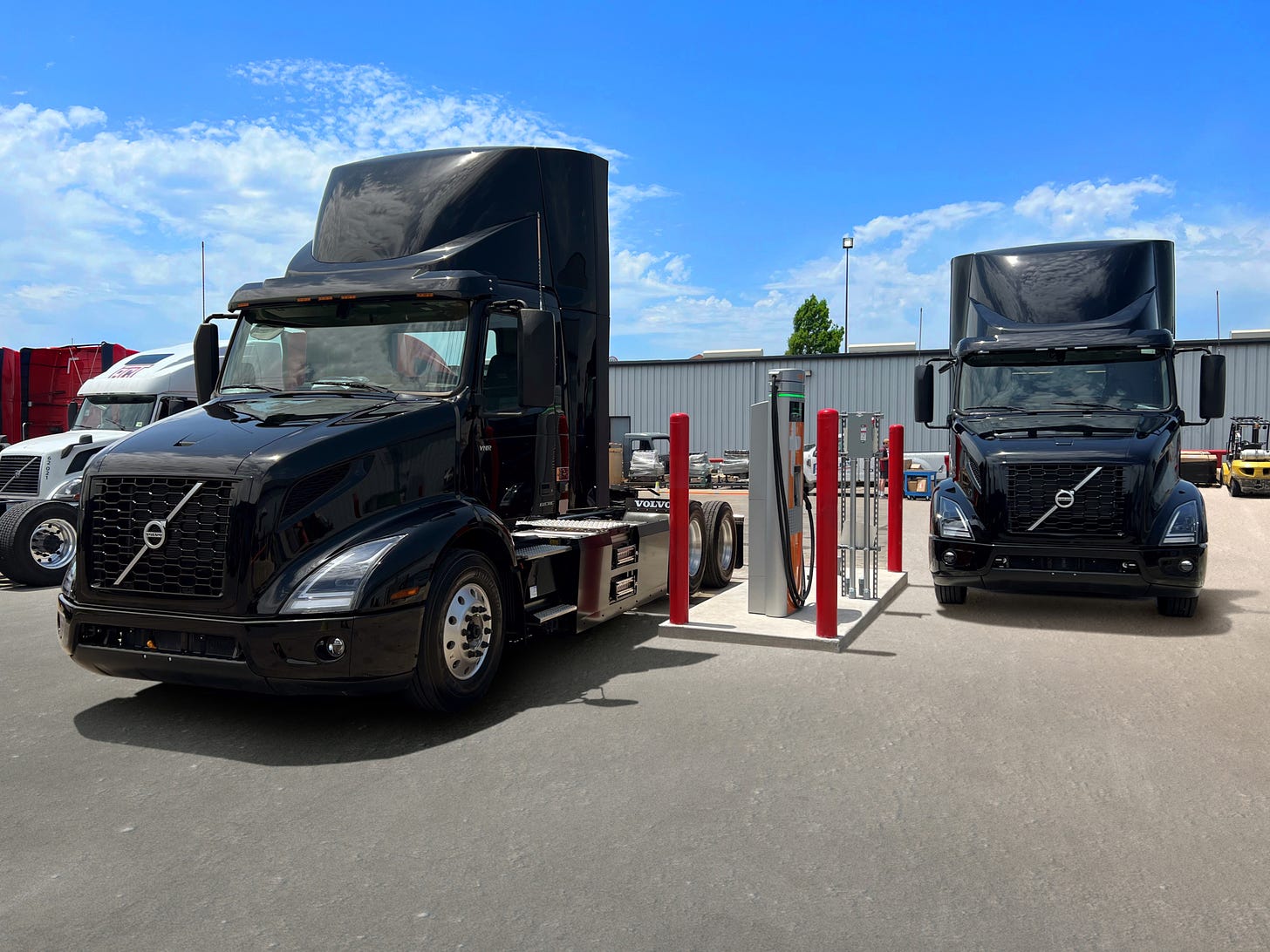
Volvo is taking a similar path to Ford’s fleet division, Ford Pro, in how electric vehicles are introduced to somewhat skeptical customers. But the cost savings are real and significant, and if it helps the bottom line, businesses are likely to be enthusiastic about it.
The next time you see a Volvo truck hauling goods around town, look just beneath the door handle for the word “Electric” — it might be your only indication, aside from a lack of diesel engine rumble, that something new and exciting is rolling alongside.




